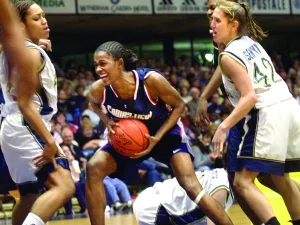
Making History Blog
Where Were Pittsburgh's Christmas Monorails?
Christmas train rides have long been cherished childhood holiday traditions. But during a few select years in the 1960s, Pittsburgh children could also ride a Christmas monorail.
Columbus, All Wrapped Up?
October 12, the day Christopher Columbus landed his ships on the island of San Salvador in 1492, is upon us yet again. Here in Pittsburgh, the Columbus monument in Schenley…
Citizens’ Arrest: The Case of the Vacca Family’s U.S. Citizenship
In the early 1920s, two immigration acts, the Emergency Quota Act in 1921 and the Johnson-Reed Act in 1924 (later known as the Immigration Act of 1924), placed quotas on immigrants entering the United States. Quota numbers were determined by the National Origins Formula, which restricted the number of incoming migrants based on ethnic populations in 1910 and 1890, respectively. This policy was in use from 1921 through 1965, instituted to curtail the high number of unskilled laborers immigrating from Southern and Eastern Europe.
From Kenny’s Grove to Kennywood, Part 2 of 2
Getting streetcar service to Kenny’s Grove was fraught with drama. In 1897, the Braddock & Duquesne Street Railway was chartered (locals called it the Yellow Line for its yellow-painted cars) but like companies before it, Kenny’s neighbors did not want streetcars to cross their properties. However, the Mellons found a loophole: a public road—even one built by a private company—could use eminent domain to take the land it needed, and the road could include streetcar tracks.
From Kenny’s Grove to Kennywood, Part 1 of 2
In the late 1800s, the breezy hilltop southeast of Pittsburgh that is now home to Kennywood Park drew people from across the region for picnics, dancing, and other, less-wholesome entertainment. Kenny’s Grove wasn’t the only picnic ground in the region, and not the only one to grow into a trolley park, but its struggle to evolve and survive is unique for the past 125 years.
Crossroads of the World: How Urban Renewal Changed the Hill
From 1910 to 1970, the Great Migration brought over six million African Americans to northern and western cities including Pittsburgh. New arrivals escaped Jim Crow laws, only to find opportunities still limited based on race in employment, housing, and accommodations. In navigating their new cities, a helpful tool for Black Americans was “The Negro Motorist Green Book,” published from 1936 to 1967 by Victor Green.
Romper Room: A Look at Pittsburgh’s Playful Preschool
Put on your thinking caps, boys and girls: “Romper Room” debuted 65 years ago in Pittsburgh on May 19, 1958.
For All Seasons: Remembering Dick Groat
In this age of increasing specialization, it is still possible to find multi-sport athletes competing at a high level in high school, though it becomes less common in college, especially in Division 1-A where training is a focused, year-around endeavor. It is rarer still in the big leagues. Certain names leap immediately to mind – Bo Jackson, Deion Sanders, even Babe Didrikson. But there are also athletes with a connection to this region that have earned the moniker, “players for all seasons.”
Remembering Herb Douglas
On Saturday, April 22, America lost its oldest living African American Olympic athlete and medalist. Our friend and supporter Herb Douglas passed away, here in his hometown of Pittsburgh, having celebrated his 101st birthday on March 9.
From the WPIAL to the WNBA: Swin Cash’s Basketball Legacy
She has more than lived up to the promise of her first name, Swintayla, which means astounding woman in Swahili. Swin Cash has achieved at every level in the sport of basketball, both on the court and now in the front office. Born in McKeesport, she grew up in Harrison Village as a self-described, “skinny, bowlegged girl with a dream about playing basketball.”










